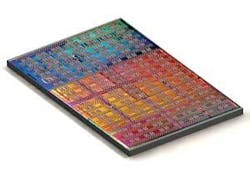Vision Research introduces digital high-speed camera for airborne applications
Vision Research in Wayne, N.J., is launching the Miro Airborne digital high-speed camera for airborne applications, such as stores separation on manned aircraft or unmanned aerial vehicles (UAVs), miss distance calculations for missile deployment, or landing-gear analysis. The Miro Airborne has a complementary metal oxide semiconductor (CMOS) sensor with a maximum resolution of 800 by 600 pixels. At maximum resolution, Miro Airborne can record 1,250 frames per second (fps), and as fast as 111,000 fps at reduced resolutions. With shutter speeds as fast as two microseconds, users can freeze objects in motion, eliminate blur, and bring out details necessary for motion analysis. Miro Airborne also features mounting plates with standard 1/4-20 holes on two sides of the camera. The Miro Airborne camera includes 2 gigabytes of internal volatile memory for the fast writing of data for high-speed image capture, and also features a CompactFlash card slot. After the camera is triggered, Miro Airborne immediately writes to its internal memory and then automatically transfers the images to the removable, non-volatile CompactFlash card for safe storage of images and movie files. For more information, visit Vision Research online at www.visionresearch.com.
Optek offers LED strips with fast response times and low power consumption
TT electronics Optek Technology in Carrollton, Texas, is introducing light-emitting diode (LED) module strips for signage and channel-letter applications that provide fast response times and low power consumption. Typical applications for Optek’s LED light strip product line include commercial channel lighting for signage applications, media illumination, large area backlighting, point-of-sale displays, mood-setting decoration, landscape lighting, and neon replacement lighting. The LED strips are available in three models: the OVM18F4x7 Series 4; OVM12F3x7 Series 3; and OVQ12S30x7 Series. Each model is available in red, amber, green, blue, and white. For more information, visit Optek online at www.optekinc.com.
null
SAIC wins $45 million infrared countermeasure technology contract from U.S. Air Force
Science Applications International Corp. (SAIC) in San Diego will research new infrared countermeasure technologies to help protect U.S. military aircraft under terms of a potential $45.6 million U.S. Air Force contract. SAIC will support the Air Force Research Laboratory (AFRL) Electro-Optical Warfare Technical Analysis Effort (EOWTA) II Program at Wright-Patterson Air Force Base in Dayton, Ohio. The program is managed by the Air Force Research Laboratory’s Sensors Directorate at Wright-Patterson Air Force Base. The Directorate leads the discovery, development, and integration of sensor and countermeasure technologies for the warfighter. The new technologies developed and assessed by SAIC will help the Air Force protect military aircraft from surface-to-air and air-to-air missile threats.




